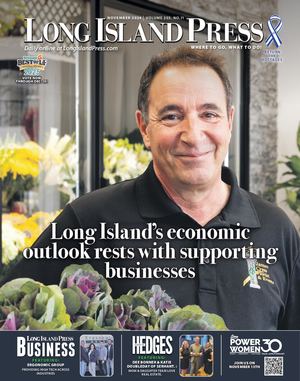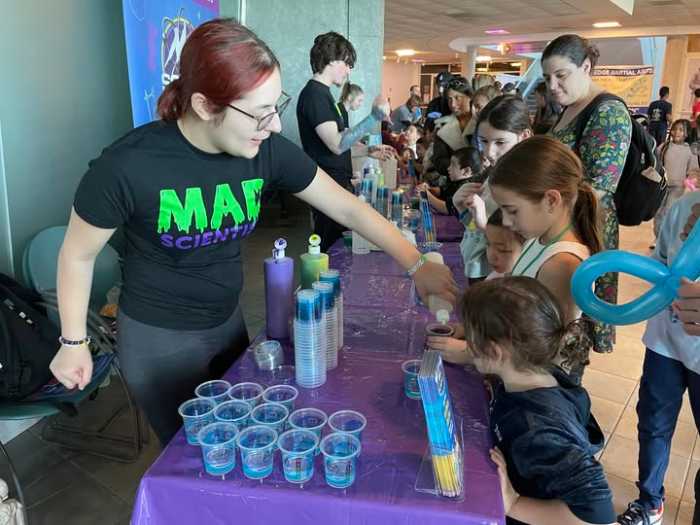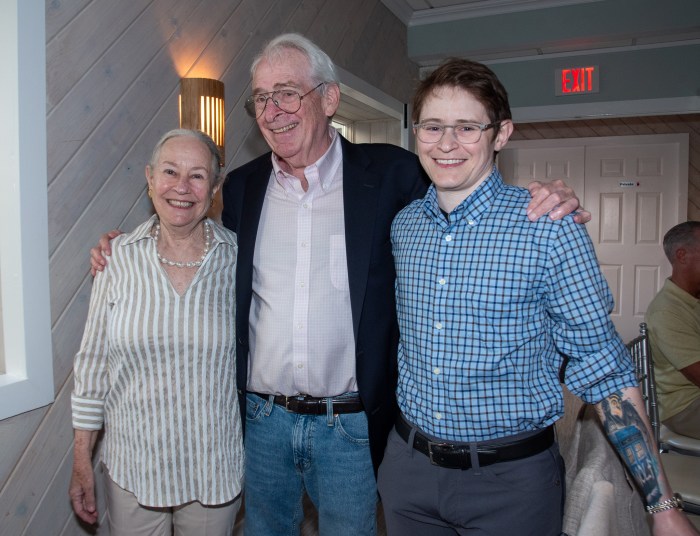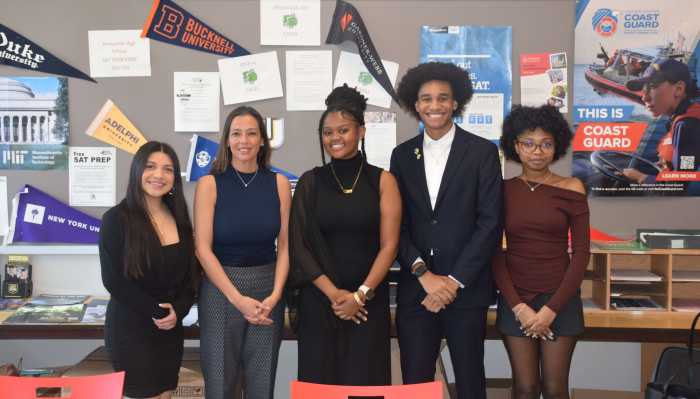Westbury residents were presented with projects prioritized for the $10 million Downtown Revitalization Initiative (DRI) state grant last Wednesday night at the Westbury Community Center, including rezoning to expand residential and commercial areas, upgrading downtown streets, municipal facilities and retail stores and creating a new municipal arts center.
The diverse initiatives were described with artists’ renderings and text on boards around the meeting room in the community center, with consultants retained by the village board stationed at each one to answer questions about them during the informal 90-minute meeting.
 The consultants had developed the material in collaboration with the village board and the members of the planning committee who spent the past eight months conferring on projects to be undertaken with the $10 million in grant money.
The consultants had developed the material in collaboration with the village board and the members of the planning committee who spent the past eight months conferring on projects to be undertaken with the $10 million in grant money.
“The numbers are going to add up to some indeterminate total over $10 million, because the $10 million is hoped to attract additional money,” said Westbury Mayor Peter Cavallaro.
Cavallaro said he “could easily see” the final sum of investment in the village’s infrastructure reaching $200 million.
Cavallaro said plans to rezone downtown areas for commercial and residential development would draw private money. He said developers have already expressed interest in working on projects in Westbury.
“I like to think of the DRI as seed money to attract private money,” he said.
Cavallaro told those present at the meeting that a 150-page report on the projects would be sent to the state in two weeks and made public on the village website. That report will specify estimated costs for the projects outlined in the presentation at the community center.
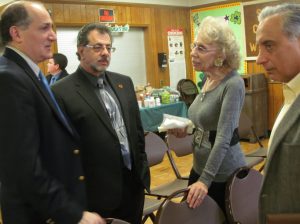
Wilbur Mason, who served on the planning committee, said he was “very satisfied” with the projects selected, particularly the transit-oriented rezoning which is intended to draw more residents into the community. Mason said the consulting companies the village hired did a “very good job” on the project. “They listened to the community,” he said.
Katie Lyon, a consultant with BJH Advisors who served as project manager, said the consultants “coordinated the ideas” and “helped move the ball forward.”
Based on residents’ desire to see new businesses downtown, she said the consultants suggested the idea of the grants to help set up new businesses.
“We listened to the needs and priorities and used our experience to create certain priorities,” Lyon said.
Along with BJH, consulting companies included FXFOWLE, an architecture and urban design firm; Mathews Nielsen Landscape Architects; WSP Brinkerhoff and VJ Associates, which estimated costs.
“The last iteration included most of the things we wanted to get done in a three-year time frame. It’s exciting,” said Steven Rudolph, who manages commercial and residential properties in Westbury.
Eric Alexander of Vision Long Island, who served on the steering committee for the DRI planning, said residents who participated in the process seemed to unite around it.
“It truly was a representation of the different type of projects that Westbury residents want to see advanced,” Alexander said.
Transit-oriented initiatives:
—Updating the village zoning code to promote a mix of commercial and residential development.
—Issuing a request for proposals from developers to construct residential units along the north face of the garage fronting Scully Place to add residential space near the Long Island Rail Road station. This would be coordinated with the LIRR’s planned $2 billion investment to build a four-story parking lot on a village-owned commuter lot near the station.
—Developing open space on a 25-acre tract in the Maple/Union area, which is currently zoned for industrial use, to be redeveloped for mixed-use transit-oriented development.
Diversity initiatives:
—Upgrading the Westbury Recreation Center, Community Center and Sports Center to support approximately 300 youth, adults and seniors using those facilities.
—Launching a retail capital improvement program to target existing retail businesses for capital improvements and a grant program to attract new businesses by funding interior construction or exterior facades.
—Developing the Madison Street municipal parking lot through a public-private partnership to construct a four-story parking garage and 30 new multi-family residential units.
Pedestrian experience improvement initiatives:
—Implementing coordinated set of streetscape improvements along Post Avenue from the Northern State Parkway to Old Country Road by replacing existing street lights with LED lighting, installing free standing planters and street trees with grates, widening pavers at benches and installing multi-use parking pay stations.
Arts-centric initiatives:
—Acquiring property of 2,000 to 3,000 square feet for a building to house the Westbury Arts Council for arts showcases, classes, events and meetings.
—Commissioning and installing murals and sculptures to enliven blank walls and public spaces to highlight the community’s cultural diversity.
—Establishing the Westbury Historical Collection Exhibit in the Corporal James Walsh VFW Post 945.
